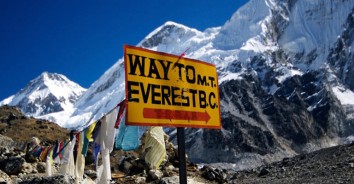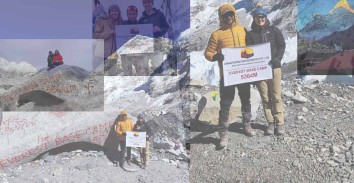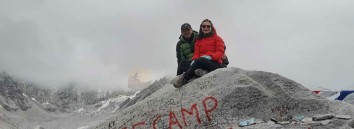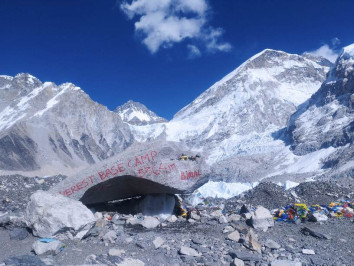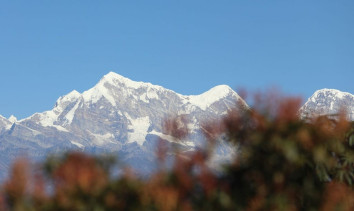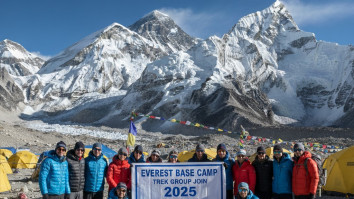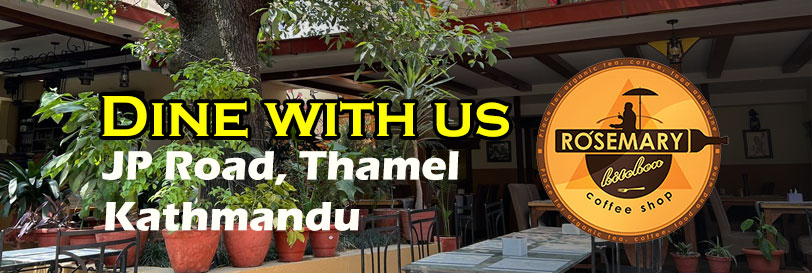Overview And Highlights
TRIP FACTS

The 5-Day Everest View Trek provides an ideal opportunity to connect with nature and escape the routine and mundane aspects of everyday life. This trek in the Everest region traverses through the Sagarmatha National Park, leading you through enchanting rhododendron forests, Sherpa villages, Buddhist monasteries, prayer flags, and Chortens, ultimately guiding you to Namche Bazaar, the primary gateway to the Classic Everest Base Camp. As we progress to Tengboche, closer views of majestic peaks such as Mount Ama Dablam, Mount Thamserku, Mount Everest, Mount Lhotse, Kongde Ri, and other Himalayan summits unfold in this abbreviated Everest viewpoint trek. Along this trail, you'll pass through quintessential Sherpa settlements like Monjo, Namche Bazaar, Khumjung village, and Khunde, providing insight into Sherpa culture, traditions, and their way of life.
This expedition, also recognized as the Everest Panorama Trek, offers the most accessible and exquisite Himalayan vistas. It's a succinct journey that allows you to immerse yourself in the Khumbu region's essence and relish breathtaking views of Mount Everest and its neighboring peaks. The Short Everest View Trek is the go-to choice for those who are constrained by time yet yearn to explore the Khumbu region and revel in the proximity of towering Himalayan giants.
For adventure seekers who desire to bask in the splendor of the Himalayas but harbor concerns about trekking to altitudes exceeding 3,800 meters, this trek is a flawless escape. The risk of altitude sickness on this trek is minimal, making it an ideal choice for trekkers of all age groups and especially suitable for novices. Solo trekkers can also embark on this journey confidently. The Everest Panorama Trek qualifies as an easy trek, involving daily walks of approximately 5-6 hours. Prior hiking or trekking experience is not mandatory, but if you have engaged in such activities before, it can be advantageous.
Highlights Of Everest View Trek
- Short, easy but fascinating trek in the Everest region
- Glorious and stunning views of Everest ranges including Everest, Nuptse, Lhotse, Cho Oyu, Tengboche, Pumori, Khumbila, and more
- Close insight of Sherpa’s lifestyle and culture
- Exploration of timeless Sherpa’s heritage sites – Tengboche Monastery (largest monastery), Khumjung Museum (famous for housing Yeti head)
- Two nights at the bustling town of Namche
Everest View Trek Best Season
Spring ( March to May)
- Spring gives superb visibility with clear skies and minimalcloudiness. This season provides breathtaking mountain view and is ideal for photography. this time forest are in full bloom with rhododenderon flowers.While trekking,You may also spot variety of bird species and wildlife . In the lower region daytime temperature range from 15°C to 20°C (59°F to 68°F), while night time temperature can dip to aproximately -5°C to 5°C (23°F to 41°F) in higher elevations.
Summer/Monsoon( June to August)
- The monsoon season is known for its heavy rainfall, cloudy conditon, and reduce visibility.Hiking during the monsoon season can be difficult dur to muddy path, leeches and the danger of landslide.
- Benefits: The lush scenery are at their greenest during this season, the trails are less congested. It offers a chance to enjoy the area in a quieter and more peaceful enviroment. With daytime highs ranging from 15°C to 25°C (59°F to 77°F) in the lower areas. In the upper elevations, nighttime temperatures can drop to 0°C to 10°C (32°F to 50°F).
Autum (september to November)
- Clear skies and excellent visibility offer stunning views of Himalaya peaks.it's the best season for mountain photography. Autumn coincides with various Nepali festivals like Dashain and Tihar, providing opportunities to immerse in local culture.Trails are dry, making for comfortable and stable trekking conditions. With daytime highs rangng from 15°C to 20°C (59°F to 68°F) in lower areas and 0°C to 10°C (32°F to 50°F) at higher altitudes.
Winter ( December to February)
- Winter provides clear skies and excellent visibility but it comes with colder temperature. Winter delivers more peaceful and seren trekking experience, with fewer people on the trails and teahouses. The picturesque snow covered landscpes offer a unique perspective of the reason. with daytime temperatures ranging from 0°C to 10°C (32°F to 50°F) in lower areas and -15°C to -5°C (5°F to 23°F) at higher elevations.
- The main challenge during this season is extreme cold, especially at higher elevations, where trails might be the icy or snowy, necessitating increased caution.
Equipments
The next details will provide you with a basic understanding of what you should carry for the trek. It's crucial not to overlook the necessary items, as they will impact your comfort and safety during the hike. It's just as vital not to weigh yourself down with unnecessary gear during the trek.
- A pair of half-golves
- A pair of Woolen shocks
- A wool jacket or pullover, Water and Windproof shell jackets
long sleeve t-shirts - Windproof and Waterproof Trousers (warmer) , Comfortable trekking pants
- Water Proof Trekking Boots/ Pair of sandals
- First Aid kits and Medicine
- Backpack with rain cover
- Water Bottle
- Headlamp or torch
- Sunscreen / Sunglasses / Sunhat
- Sleeping bag
- Trekking Poles
- Chapstick
- Camera & Batteries
- Power adapter and chargers
- Travel Towel
- Toiletries
Everest View Trek Cost
| No. of People | Price (per person) |
|---|---|
| 1 | US$ 1300 |
| 2 | US$ 1250 |
| 3-7 | US$ 1200 |
| 8-12 | US$ 1150 |
| 13-20 | US$ 1100 |
Itinerary Expand All Close All
Early morning transfer to Kathmandu domestic airport for the super scenic flight on smaller aircraft Dornier or Twin otter to Lukla with awesome panorama views array of snow capped mountains from Ganesh-Langtang-Jugal Himal, Gaurishanker, Numbur and Mt. Everest with Nuptse, Lhotse, after half an hour reaching at Lukla at 2,820 meters the starting point of Everest trekking and mountaineering expeditions begins from this busy town of Lukla, after a break and rest, starting the first day walk through Lukla bazaar with shops, stores, restaurants and number of well built lodge and hotels, and then on downhill walk for an hour with gradual winding trail with few ups and down passing many smaller villages and farm fields with view of Kusum kanguru and Kwangde peaks going around clockwise on Buddhist mani (prayer) walls and monument to reach at Phakding village for the first overnight in Khumbu area. Phakding located by the glacial Dudh Kosi River.
Food
BLD
Accomodation
Lodge
Elevation
2680
Starting the fresh morning walk with pleasant uphill following the Dudh Kosi River and re-crossing the same river few times as the walk progress to reach at a nice Monjo village with views of Tharmasarkhu peak and the sacred peak of Khumbila at 5,865m (the patron God of Khumbu area) from here heading down to the entrance of Sagarmatha National Park after registration of Park & TIMS permits (Trekking Information Management System) which all trekkers must have to travel in the Nepal Himalayan region, here with information centre which is interesting to learn of the Khumbu area and its mountains and culture.
From here leading to cross a bridge over Dudh Kosi and arriving at Jorsalle the last village before Namche Bazaar of 2-3 hrs walking distance, stopping here probably for lunch break, afternoon walk leads on the river valley for sometime on reaching the last high bridge an uphill climb for 1-2 hours to reach our overnight destination at Namche, walking on the winding uphill through nice pines, firs and rhododendron woodland, chances of seeing some wildlife like Impeyan pheasant Danfe (Lopoforous) a colorful big bird which is Nepal national bird.
After a tiring climb finally reaching at Namche Bazaar with colored roofs houses set in huge U shaped with views of Kwangde Himal and Tharmasarkhu peak, here check into nice clean comfortable and cozy lodge for overnight stop for 2 nights.
Food
BLD
Accomodation
Lodge
Elevation
3440
A full rest day here for acclimatization at this high altitude of 3,440 meters before heading higher destination, Namche bazaar full of shops, stores, pubs and restaurants, post office, banks, cyber café with fresh bakery, this place is flooded with locals for shopping fresh supplies in Saturday market. Namche offers places for short or day hike to neighboring scenic areas up to Syangboche small airstrip and towards famous Everest View Hotel, Khunde and Khumjung village on the wide glacial valley beneath Mt. Khumbila or long hike to Tamo and Thame towards west, but the best thing is to 30 minutes climb the top ridge of Namche for aerial view of Namche bazaar and the surrounding mountain panorama with first view of Mt. Everest, Lhotse, Nuptse and the majestic peak of Ama Dablam, Kangtenga, Tharmasarkhu, Kwangde and Pachermo towards west, here visit the museum with information on flora / fauna, Sherpa traditions, culture and of mountaineering history of Khumbu area.
Food
BLD
Accomodation
Lodge
Elevation
3440
After a fine rest in Namche morning walk leads to a small climb at the top ridge and then on the gentle winding trail with few ups and down along with the great superb views of Mt. Everest and adjoining mountains, walk leads further with constant scenery of mountains rivers and dales in the forested area of alpine vegetations, after few hours, descending to Imjatse River at Phunge Tenga a small place for lunch stop located in the midst of conifer woodland.
From here 2 hours climb through the dense tree lines of pines, firs and rhododendron with awesome views of snow clad peaks and finally reaching the picturesque spot at Tengboche Monastery area with grand panorama of mountains that encircles this small place and towards north view of Mt. Everest and the stunning close face of Mt. Ama Dablam, with afternoon free to visit this interesting monastery and the museum.
Food
BLD
Accomodation
Lodge
Elevation
3867
From Tengboche walk continues with a downhill through nice pleasant forest passing lovely place through Lobesa, Shanasa after a short climb from the river at Phungetenga, on reaching the level path and then with a climb towards the great wide valley to Khumjung village a nice traditional and a large village with the only High School of Khumbu area (built by Hillary Foundation) and an old monastery of more than 500 years which has a Yeti scalp believed to be of Yeti (believe it or not) as Solu & Khumbu and in the Himalaya story of Yeti exist although it has not been seen for many decades but the story continues which is almost a legend at present, on reaching Khumjung check into a nice homely lodge with time to visit the monastery and villages around.
Food
BLD
Accomodation
Lodge
Elevation
3730
After a nice pleasant stay at Khumjung morning walk with a visit to Khunde which is on the little higher side of this valley here visiting the only hospital of Khumbu area which was also built by Sir Edmund Hillary Foundation, catching the beautiful panorama of high snow capped mountains, then heading towards Namche via a small airstrip of Syangboche and then loosing much altitude to reach at Namche Bazzar, after a rest here continue walk downhill to river bed and after crossing two bridges back at Monjo for overnight stop.
Food
BLD
Accomodation
Lodge
Elevation
2860
Today the last leg of the trek with pleasant walk on the winding trail passing several villages of Benkar, Toc-toc and Phakding and then Ghat, from Choplong village where the trail from Jiri joins with the last climb for an hour or more to reach at Lukla for last dinner and overnight with the guides and porters.
Food
BLD
Accomodation
Lodge
Elevation
2830
As per the flight time to Kathmandu, a short walk to Lukla airport terminal in the early morning, on boarding the smaller plane 30 minutes of sweeping flight with parallel views of mountains all the way to Kathmandu, at Kathmandu transfer to hotel after a short drive around Thamel area, with whole day free as per the time of return flight from Lukla.
Food
Breakfast
Accomodation
Hotel
Elevation
1350
Services Included on Price
Cost Includes
-
Accommodation
-
Basic tea houses/guesthouses during trek (twin-sharing, simple rooms)
-
-
Transport
-
Round-trip flight Kathmandu ↔ Lukla (regular airline, economy class)
-
Airport transfers by local vehicle
-
-
Guide & Support
-
Licensed English-speaking trekking guide
-
No porter service (available on request at extra cost)
-
-
Permits & Fees
-
Sagarmatha National Park entry permit
-
Khumbu Pasang Lhamu Rural Municipality permit
-
-
Extras
-
Basic first aid kit with guide
-
Trek briefing before departure
-
Cost Excludes
-
Meals during trek & in Kathmandu
-
Accommodation in Kathmandu (before/after trek)
-
Porter service (optional at extra cost)
-
Personal trekking equipment (sleeping bag, down jacket, poles, etc.)
-
Hot showers, battery charging, Wi-Fi in tea houses (paid locally)
-
Travel insurance (mandatory, covering high altitude & evacuation)
-
International flights to/from Nepal
-
Nepal visa fees (payable on arrival)
-
Alcoholic beverages, soft drinks, bottled water, snacks
-
Tips for guide and drivers
-
Extra costs due to Lukla flight cancellations, weather delays, strikes, or natural disasters
Standard Package Service Excludes
-
Accommodation
-
2 nights at a 3★ hotel in Kathmandu (breakfast included)
-
Tea houses/lodges during trek (twin-sharing)
-
-
Transport
-
Round-trip flight Kathmandu ↔ Lukla (regular airline)
-
Private airport transfers in Kathmandu
-
-
Meals
-
Breakfast in Kathmandu
-
Three meals per day during trek (breakfast, lunch, dinner with tea/coffee)
-
-
Guide & Porter
-
Experienced licensed trekking guide
-
Porter service (1 porter for 2 trekkers, baggage limit 15–20 kg per porter)
-
-
Permits & Fees
-
Sagarmatha National Park entry permit
-
Khumbu Pasang Lhamu Rural Municipality permit
-
-
Extras
-
Airport pick-up/drop-off
-
Basic medical kit
-
Assistance in case of Lukla flight delays
-
Standard Package Service Excludes
-
Lunch & dinner in Kathmandu (except where mentioned)
-
Personal trekking gear (available for rent in Kathmandu)
-
Hot showers, charging, Wi-Fi during trek (paid locally)
-
Travel insurance (mandatory)
-
International flights & Nepal entry visa
-
Alcoholic beverages, bottled water, snacks
-
Tips for guide, porter, and drivers
-
Extra nights if trek is delayed due to weather/personal reasons
-
Any costs due to unforeseen circumstances (natural disasters, strikes, political unrest, etc.)
Luxury Package Service Includes
-
Accommodation
-
2 nights in a 4–5★ hotel in Kathmandu (breakfast included)
-
Best available lodges/tea houses during trek (upgraded rooms, attached bathrooms where possible)
-
-
Transport
-
Round-trip flight Kathmandu ↔ Lukla (option for helicopter one way)
-
Luxury private vehicle transfers in Kathmandu
-
-
Meals
-
All meals during trek (menu choices available)
-
Breakfast in Kathmandu
-
Welcome & farewell cultural dinners in Kathmandu
-
-
Guide & Porter
-
Highly experienced licensed trekking guide
-
Porter service with higher baggage allowance (20–25 kg per porter)
-
Insurance for trekking staff
-
-
Permits & Fees
-
Sagarmatha National Park entry permit
-
Khumbu Pasang Lhamu Rural Municipality permit
-
TIMS card
-
-
Extras
-
Trekking gear on loan (sleeping bag, down jacket, walking poles)
-
Cultural show in Kathmandu
-
Emergency helicopter coordination support (insurance required)
-
Oximeter & health check monitoring
-
Luxury Package Service Excludes
-
International flights to/from Nepal
-
Nepal entry visa fees
-
Comprehensive travel insurance covering high altitude & helicopter evacuation
-
Personal expenses: souvenirs, laundry, shopping, phone calls
-
Alcoholic beverages, specialty meals beyond package
-
Tips for guide, porter, and drivers (customary)
-
Optional luxury upgrades (full helicopter trek, single-room supplement everywhere)
-
Extra expenses due to Lukla flight cancellations, weather delays, or political disruptions
Everest view trek Altitude Profile
Route Map

FAQs
The Tengboche & Everest Panorama Trek is considered a moderate trek and requires a moderate level of physical fitness and endurance. The trek involves some steep ascents and descents, but is generally less challenging than other treks in the region. However, proper acclimatization and preparation are still crucial to completing this trek safely.
The best time to do the Tengboche & Everest Panorama Trek is during the spring (March to May) and fall (September to November) seasons. These seasons offer clear skies, mild temperatures, and stable weather conditions, making it easier to trek in the high-altitude terrain. However, be prepared for colder temperatures and occasional snowfall at higher altitudes.
Yes, you will need several permits to trek in the Everest region, including the Sagarmatha National Park Permit, the Khumbu Pasang Lhamu Rural Municipality Entry Permit, and the Trekkers' Information Management System (TIMS) card. These permits can be obtained in Kathmandu or at the entrance of the national park.
Accommodation during the Tengboche & Everest Panorama Trek ranges from basic teahouses to more luxurious lodges, depending on the location and altitude. Teahouses are small guesthouses that offer basic facilities such as a bed, shared bathroom, and simple meals. Lodges provide more amenities such as private rooms, hot showers, and a wider selection of meals. However, at higher altitudes, the facilities become more basic due to the remote location and harsh climate.
To prepare for the Tengboche & Everest Panorama Trek, it is important to focus on building your physical fitness and endurance through regular exercise and hiking. You should also acclimate to higher altitudes gradually and take necessary precautions such as staying hydrated, eating a healthy diet, and getting adequate rest. It is also recommended to pack appropriate gear and clothing for the trek, such as a warm jacket, waterproof boots, and a high-quality sleeping bag

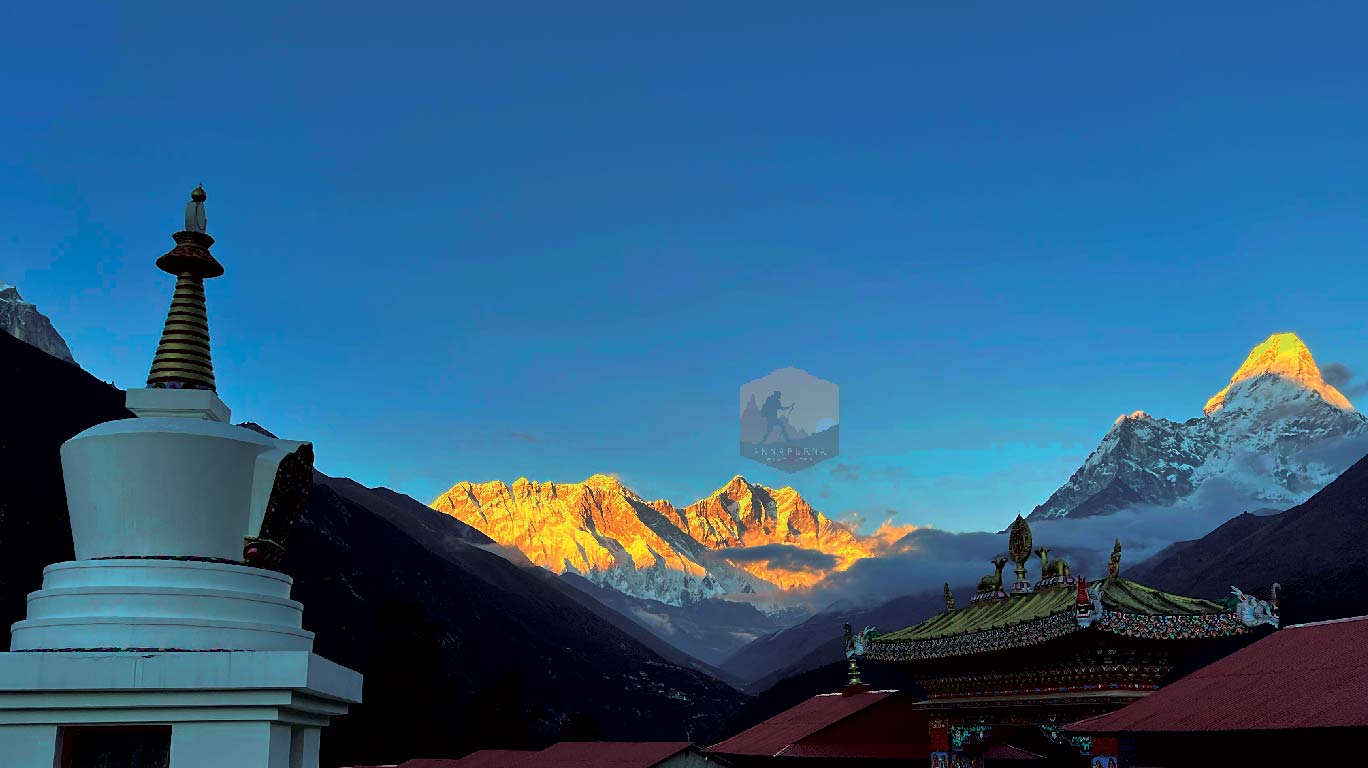
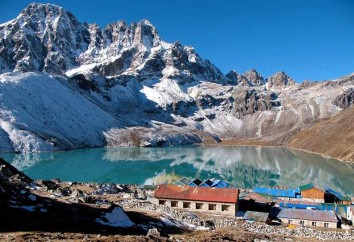
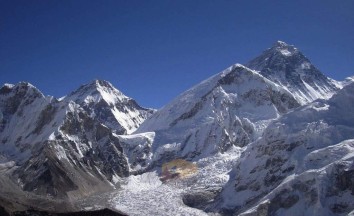
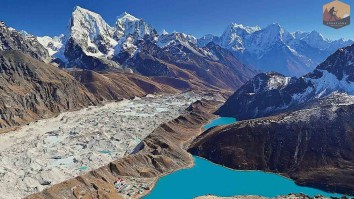

.jpg)
